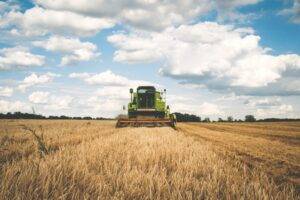[vc_row][vc_column][vc_column_text]
Hybrid Tractors: Electric Tractors
Innotec Power leads the industry in both, the design as well as the manufacture of DC Brushless Motors, PMSMs, as well as custom Permanent Magnet Generators & Alternators. We possess expertise and build prototypes to production machines for any range falling between 100 watts to 150 kW. We have unique & unmatched expertise in power generation, while also ensuring our equipment is not a heavy, clunky hunk of metal.
Building our PM Motors allows us to provide complete customization, allowing you to achieve your goals. However difficult the application, Innotec Power is able to offer tailor-made and capable solutions for it.
For the hybrid and electric tractor OEMs, Innotec offers
DC Generators – For More Information
PMSM and BLDC Motors – For More Information
[/vc_column_text][vc_column_text]

ADVANTAGES OF AN ELECTRIC/HYBRID TRACTOR
Below are a few advantages that electrical and hybrid tractors have over their conventional ICE counterparts:
1. Hybrid Tractors – Less Maintainence
Performing routine maintenance on their vehicles isexpensive and time-intensive for farmers. In addition to the cost of repairs, the time and consequent precious productivity lost for the sake of repairing an indispensable vehicle adds to the cultivators’ woes.
Although they do not come with an absence of maintenance needs, electric and hybrid tractors have far lower maintenance requisites than a diesel powered one. Add to that the number of co-dependent moving parts in a combustion engine, and it takes a lot the effort to keep the machine up and running.
Going electric requires fewer mechanical parts. An absence of exhaust systems, fuel pumps, radiators, and several other small components means there is less opportunity for a tractor to break down and for a part to be replaced. The sole major maintenance/replacement responsibility on the owner is the battery, which also has a life of 8-10 years before needing a replacement.
For hybrid tractors, since the electric parts share the burden of the work stress, the ICE will have a much longer life than a conventional engine.
2. Higher Efficiency & Less Running Costs
An advantage of greater energy efficiency is the reduced operating cost of a vehicle and financial viability in the long run.
Conventional tractors lack the scale of efficiency their electric counterparts deliver with less adjustable fuel consumption to torque availability. An energy efficient electric or hybrid tractor helps its owner save operating expenses in the long run, since the smaller savings with regard to fuel and maintenance costs can be re-invested into the farming business and add to the cultivators’ earnings.
3. Safety
Electric tractors possess a center of gravity positioned lower than their gas-powered counterparts, reducing the likelihood of their toppling or rolling over in the event that they are required to negotiate uncharted/uneven terrains.
Switching to electric or hybrid also eliminates, to some extent, the use of flammable liquids or gases for fueling or refueling, cutting down risks of accidents.
4. Clean
It is a well-established fact that combustion engines generate dangerous effluents and adversely affect the quality of the air, which becomes a source of illness and may cause chronic difficulty in breathing. Greater the count of combustion vehicles on the farm, higher the concentrations of effluents in the air. With electric or hybrid tractors, the air can continue to remain fresh and contribute to the good health of the residents of the neighboring area.
Electric & hybrid tractors are also quieter than their conventional gas-guzzling counterparts.
TYPES OF TRACTORS
Depending on the purpose they fulfil, tractors can be classified into several different categories. A non-exhaustive broad classification, based on their utility, is provided as under:
EARTHMOVING TRACTORS: For these tractors, strength and heftiness are unavoidable requisites. They find especially suited applications in construction projects, such as any work being carried out on dams and in mines.
Earthmoving tractors, as their name suggests, move earth and create space for constructing basements or any other underground constructs. Further, they also find use in transporting things such as dirt, debris, rocks, mud, and even lumber. There are essentially three different types of earth-moving tractors, and these include bulldozers, backhoes & excavators.
GARDEN TRACTORS: Equipped with a power range of 1 to 10 horsepower. These tractors sport a noticeably compact size. They are most suitable for lawn mowing tasks or for preparing new flower beds in a garden.
ORCHARD TRACTORS: These tractors will find use in orchards specifically. Orchard tractors are tall and their seating is higher than usual, to aid the user in picking fruits and pruning hedges & trees, without having to get off the tractor. They find use in almost all kinds of orchards, irrespective of the crop: be it a fruit tree or grape-vines.
ROTARY TILLERS: Rotary tillers are in smaller fields, with inconsistent ground heights. Tillers are compact and make small work of fitting into tight corners and negotiating over hills.
ROW CROP TRACTORS: These tractors find their suitability in levelling, weeding, harrowing, ploughing, or pulling seed drills. They are also be instrumental in the use of machines such as threshers and water pumps.
[/vc_column_text][/vc_column][/vc_row]
